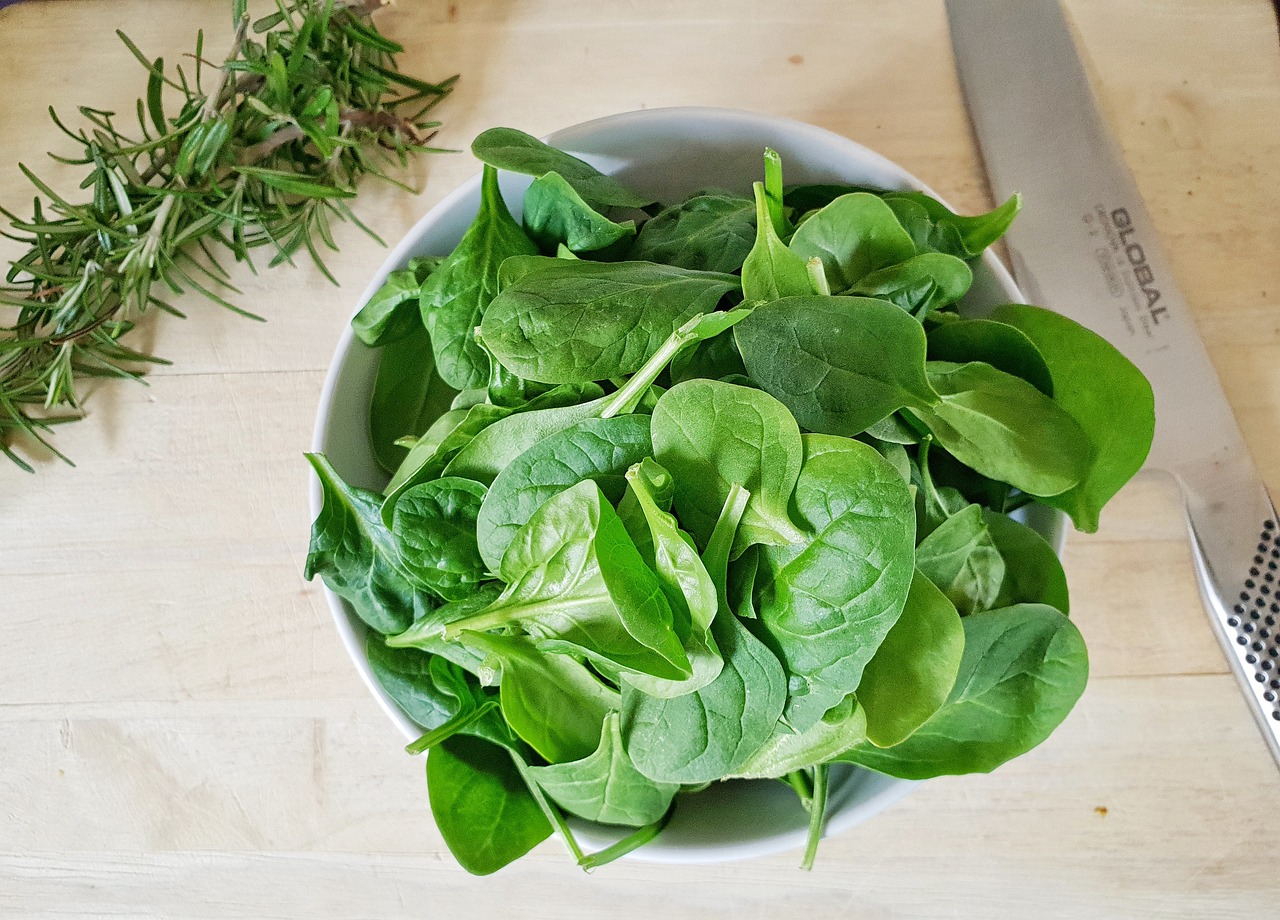It has always been said that spinach is a real “iron bomb”. Is that no longer true?
It was never true – the origin of this legend is said to go back to a miscalculation: The values of dried spinach powder were transferred to fresh spinach, even though it consists of around 90 percent water. However, compared to other vegetables, spinach still provides a good source of iron at 4.1 mg per 100 g.
So spinach isn’t so healthy after all? Yes, spinach is healthy – it’s not for nothing that people say “spinach replaces half a pharmacy”. Just one portion provides the daily requirement of vitamin C and beta-carotene. It is also rich in B-group vitamins and fills the body’s stores with the minerals potassium, calcium, magnesium and iron. The vegetable is also low in calories.
This kitchen wisdom comes from a time when there were no fridges. The background: spinach contains relatively high levels of nitrate, which the plant absorbs from the soil as it grows. If cooked spinach is left at room temperature for a long time, a chemical process can start in which bacteria convert the nitrate into nitrite. This in turn can combine with protein to form nitrosamines, which are harmful to health. However, these carcinogenic substances are present in large quantities in cigarette smoke, but also in cured meat, bacon, meat loaf and grilled sausages. In comparison, the quantities in reheated spinach are very low.
For adults who have no known hypersensitivity, they are harmless. However, the situation is different for babies: Nitrite can disrupt oxygen transport in the blood, which can lead to life-threatening “cyanosis”. Adults have a detoxification mechanism for this, which babies do not have until they are three months old. However, babies should not be given any supplementary food before the age of five months anyway.
Can nitrate be prevented from turning into nitrite?
The correct preparation and storage of spinach is the be-all and end-all: If you have freshly cooked spinach and there is a portion left over, it should be covered and placed in the fridge as quickly as possible. Reheat it the next day at the latest at a temperature of at least 70 degrees to kill bacteria and germs, then eat it whole and do not reheat it again. Two more tips: If you add lemon juice when preparing spinach or drink a glass of orange juice with your meal, you inhibit the formation of nitrosamines and the body can better utilize the iron it contains.
Is the nitrate in spinach harmful to the body? Studies have shown that nitrate-containing foods, which include lettuce, radishes and beet, prevent inflammation of the stomach lining and may lower blood pressure. And even if the muscles don’t grow like Popeye’s, oxygen transport is improved and therefore performance is increased.
I’m still not sure about this nitrate: is there anything else I should be aware of?
Basically, raw spinach, the leaves of which are added to salads, for example, contain more nitrate than cooked spinach. The content decreases when cooked. Most nitrate is found in the leaf ribs and stems. Summer or spring varieties contain less nitrate than winter spinach.
I have harvested fresh spinach from the garden. How long can I store it?
Spinach should be processed relatively quickly and not stored for long. It will keep for a maximum of two days in the vegetable drawer of the fridge. However, the vegetable is very suitable for freezing after it has been blanched.
- source: heute.at/picture: Image by Clara Sander from Pixabay
This post has already been read 6130 times!



